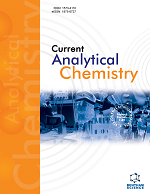
Full text loading...
Given the rapid increase in serious infectious and inflammatory diseases in the general population worldwide, it is vital to advance our understanding of the process of infection and inflammation.
These illnesses can be treated by diverse cytokines, chemokines, and chemical compounds, but how to find and identify effective protein drugs is unknown. In this study, large–scale analytical approaches, such as high–throughput chips with RNA-Seq that construct the protein regulatory networks, were established.
NLRP2:shRNA (1–3) and GFP: Control lentivirus were fabricated to infect Human Brain Microvascular Endothelial Cells (HBMEC) to knock down NLRP2 gene that not only possesses bio-chemical activity but also bio-mechanical properties. Once HBMEC was loaded on the 18mmX18mm circular soft cover slip, by knocking down NLRP2 gene and adding puromycin, a large number of cytokines were secreted to activate both autophagy and endosome vesicle signaling by KEGG pathway analysis, which was successfully detected by both ELISA approach and QAH-Neu-1 chip, but no secretion from GFP: Control.
It was demonstrated that the NLRP2 gene was highly responsive to cytokines. The protein regulatory network from RNA–Seq platform demonstrated that the secretion by knocking down the NLRP2 gene was highly correlated with autophagy, endosome, multivesicular body, phosphatidylinositol, and necrosis signalling pathway. Furthermore, most of the cytokines expressed were found to be specific for intracellular vesicle–dependent secretion, leading to obvious cell swelling and shedding, membrane protein dotting to nucleation, and actin dynamics. Interestingly, it was also found that autophagy, together with endosome signalling, was collectively activated to boost the secretion to cause a “cytokine storm”, which led to lipid phase separation.
This study proposed high throughput approaches centered on the NLRP2 gene network for many severe diseases, providing novel insight into biological pathways influencing infection and inflammation (e.g., COVID-19/E.coli). They can be modulated as potential therapeutic targets and used as biomarkers in the diagnosis and treatment of many diseases to promote human health. This increases our interest in developing new leadless-peptides at the genomics and proteomics levels to obtain cytokines and chemokines for micro-array constructions (VirD‒cytokines, VirD‒enzymes, VirD‒polymers) by membane protein fusion strategy, antibody and vaccine development for infections, diabetes, cardiovascular disease, atherosclerosis, non–alcoholic fatty liver, auto-immune, neurodegenerative disorder, and even cancer-related disease therapy. They have the most valuable applications in molecular diagnosis, protein marker discovery, and bio-therapy.

Article metrics loading...

Full text loading...
References


Data & Media loading...

